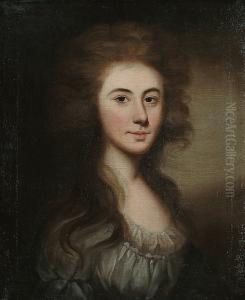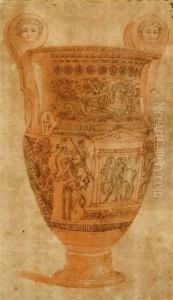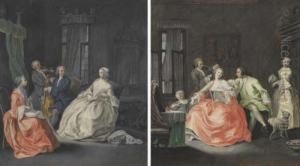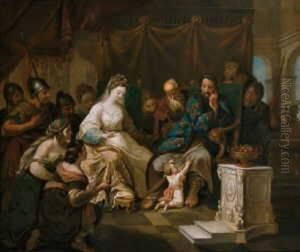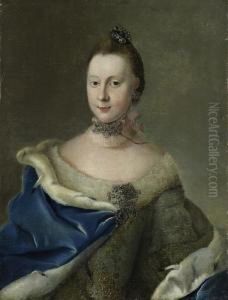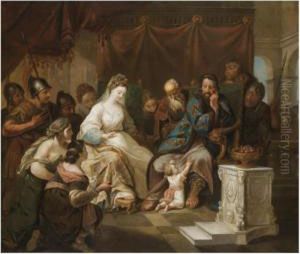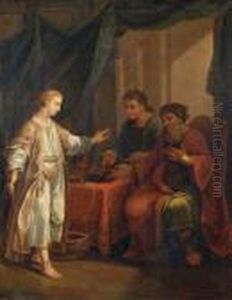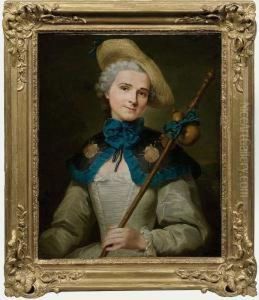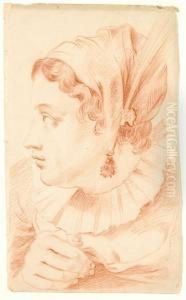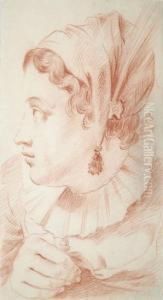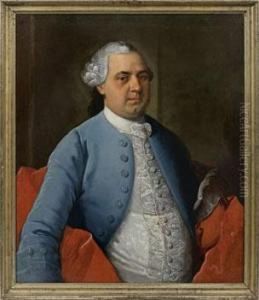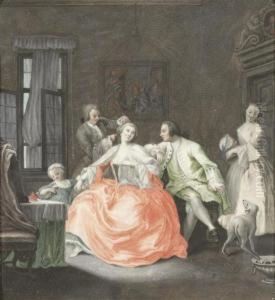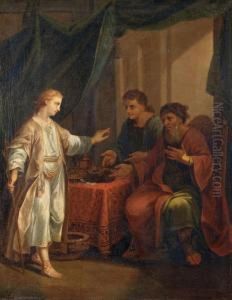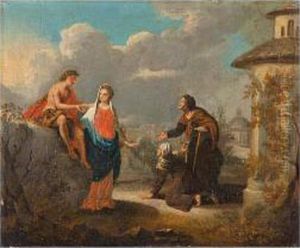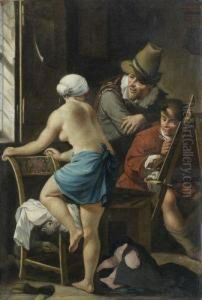Johann Anton Tischbein Paintings
Johann Anton Tischbein, also known as the Elder, was a prominent member of the Tischbein family of painters, a dynasty well-regarded in the world of art for their contributions over generations. Born on October 28, 1720, in Haina, Germany, Johann Anton was part of a lineage that would produce several notable artists who excelled in various aspects of painting, including portraits, landscapes, and historical scenes.
Johann Anton's career was significantly influenced by his family's artistic background, which provided him with an environment rich in artistic training and exposure from a young age. He initially trained under his father, Johann Heinrich Tischbein the Elder, who was a respected painter in his own right. This early education laid the foundation for Johann Anton's artistic development, emphasizing traditional techniques and the importance of capturing the essence of the subject matter.
In pursuit of professional growth, Johann Anton traveled extensively throughout Europe, a common practice among artists of his time seeking to expand their horizons and gain inspiration. His travels took him to the Netherlands, Italy, and France, where he was exposed to the works of the masters of the Renaissance and Baroque periods. These experiences were instrumental in shaping his artistic style, which combined the detailed realism of his German heritage with the elegance and grace observed in Italian and French art.
Throughout his career, Johann Anton Tischbein was known for his portraits, which were highly sought after by the nobility and other prominent figures of the 18th century. His ability to capture the likeness and personality of his subjects with a refined sense of composition and color won him numerous commissions and accolades. Besides portraiture, he also engaged in creating historical paintings and religious artworks, which were well-received for their depth and narrative quality.
Johann Anton Tischbein's contributions to art were not only in his creations but also in his role as a mentor to upcoming artists, including members of his own family. His guidance and teachings helped perpetuate the Tischbein legacy in the arts, influencing future generations.
Johann Anton Tischbein passed away on August 22, 1784, in Hamburg, Germany. His death marked the end of an era for the Tischbein family but also the beginning of a lasting legacy, as his descendants and pupils continued to honor his artistic vision. Today, Johann Anton Tischbein is remembered as a pivotal figure in the Tischbein dynasty, whose works continue to be admired for their beauty, skill, and historical significance.
